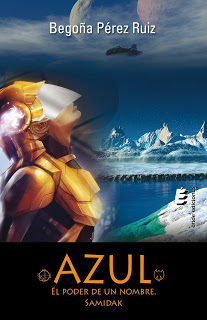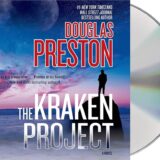Reading Michael D. Sellers’ fascinating book, John Carter and the Gods of Hollywood, we learn all the reasons why John Carter, Disney’s film version of Edgar Rice Burroughs’ A Princess of Mars, failed at the box office. This extensively researched volume finds there was a perfect storm of incompetence on the part of just about everyone involved in making and promoting the film. From top to bottom, from studio heads to publicists, just about everyone is given a portion of the blame.
The story that Sellers tells is not really new. Hollywood bungling the adaptation of popular novels to the screen has been going on since the motion picture industry began. What is new is the massive scale  of this particular blunder, and the vast amounts of money that were involved. And even more serious, and perhaps sinister, are the huge forces that were working in the background as decisions were made more on the basis of corporate ambition rather than artistic concerns.
of this particular blunder, and the vast amounts of money that were involved. And even more serious, and perhaps sinister, are the huge forces that were working in the background as decisions were made more on the basis of corporate ambition rather than artistic concerns.
Sellers gives a preliminary rundown of events leading up to the decision in 2006 by Disney Studio chief Dick Cook to green light the film with Stanton as director. Prior to that Paramount had planned to make it, with helmsmen Kerry Conran, Robert Rodriquez, and Jon Favreau slated at different times. Various problems forced Paramount to give up on it, allowing Disney to acquire it. During the development process A-list actors were considered for the leads. Tom Cruise and Julia Roberts were attached at one time to play the title character and his love interest, the lovely Dejah Thoris. As time went on, with the script being rewritten by Michael Chabon, Stanton decided to eschew big names, and concentrate more on the story and the special effects needed.
A budget of $250 million was agreed to, putting it on a par with the most expensive movies ever made. Cook okayed it, and then basically let Stanton have free reign over the project. There was a lot of trust in Stanton who had never done a live-action film before. His previous animated hits, Wall-E and Finding Nemo were big box office winners, and no one doubted Stanton’s Carter film would make its money back. Well, except maybe Disney CEO Robert Iger, who seemed to have doubts from the beginning.
Cook was increasingly coming under fire from Iger, who publicly criticized him during a conference call to investors, saying the Disney movie studio was performing poorly compared to other parts of the corporation. But Sellers notes that at the time Iger was really more interested in finishing a deal that would result in the acquisition of Marvel Comics. Iger felt there was more box office potential with the Marvel characters than with John Carter, which had a much smaller fan base. The result was that Cook was fired, Disney acquired Marvel and at the same time Iger began courting George Lucas to acquire the Star Wars franchise.
Other factors cited by Sellers that resulted in the John Carter fiasco include the hiring of a marketing executive by the name of M. T. Karney, a New York executive who came to Disney from her own company. Iger hired her as someone savvy with social media, which he saw as the new way to promote films. It was her decision to drop “of Mars” from the films original title, “John Carter of Mars.” Sellers claims that this decision had a negative effect on the production, by cutting out the exotic context of the film, leaving people not familiar with the Burroughs novel wondering, “Who the heck is John Carter?” Karney, according to Sellers, did little to promote the film through social media and seemed more concerned with flying back to New York every weekend to be with the two children she’d left there. Karney and Disney soon parted ways.
To his credit Andrew Stanton, under Richard Ross, who replaced Cook as studio head, completed the film on time and on schedule, despite press reports that he had lost control and the budget went beyond expectations. None of that was true, Sellers writes. But what was true was that Stanton saw the John Carter story differently than the way Burroughs wrote it. In particular he changed Carter from the heroic swashbuckler of the novel to a Civil War veteran who was “damaged goods.” The hero was given a backstory about his having a wife and child killed while he was off fighting in the War, hence making him an embittered loser of sorts. Stanton also changed the opening of the story by giving a lengthy prologue that tried to provide a capsule version of Barsoomian history, leading up to Carter’s arrival.
The prologue was, in most everyone’s opinion, confusing and unnecessary. For old time fans of the book, the change in Carter’s character—a concession to current writing trends— undermined Burroughs theme of man’s innate heroism. There’s a lot more to the story. But in the end, the film had a poor opening weekend and never recovered from it. Iger declared a $200 million loss and fired Ross.
In addition to the detailed account of how the movie flopped, there is a very well-done beginning section about Burroughs life, and career, and a thoughtful analysis of his writing technique and what it is about his books that keeps them in print 100 years after they were written.
Reading the book is an engrossing experience–kind of like watching the Titanic heading toward that fateful iceberg. The only quibbles I have with the book are the number of typos, at least in the ebook version I was sent, and Sellers fan-boy approach—so much so that he is one of those spearheading a social media movement to convince Disney to produce not one but two more sequels. After all that he’s written here, after all the missteps that were taken, why in the world would anyone trust Disney to do justice to any further interpretations of Burroughs work? And why would they bother? Iger landed the Star Wars franchise. Good luck to J.J. Abrams.
John Carter and the Gods of Hollywood, by Michael Sellers, Universal Media, is available from Amazon.com.











I agree with both Daniel and John in the sense that yes, it was an abysmal marketing job (with a few other issues thrown in) and, not only was it a 'meh' film, I hated the interpretation of Carter and Thoris (not to mention Dejah's Dad who was presented as a craven coward – Jeddak of Helium indeed!).
I think that killing Carter with faint praise – and the early and much ballyhoed bailout – served to kill two birds with one stone. One by helping it ditch a licensed property (they're very keen on wholly-owned it seems) and two by taking Stanton/Pixar down a peg or two, by showing that they gave them everything they wanted, it resulted in a flop, now who is going to argue over control issues? Not anyone from Pixar.
I'd be very curious to learn about any conversations between Disney and ERB Inc ever involved talk of a buy out. If so, the whole thing makes sense. Disney now largely controls the perception of properties based on Burroughs and none of it is worth as much as it was before. See? Should have sold.
My big regret is that the Paramount version didn't get made. I'd much rather see a reboot sometime in the future than a sequel. So much could be so much better. I've come to believe that the major problem with this version is that the director's vision was informed more by the comics than by the books. The back story BS and the characterizations make more sense in that light – a game of telephone with the stories.
Sellers does a good job pointing out the different philosophies Pixar and Disney have about moviemaking, and how the differences made it difficult for Stanton to get what he wanted in the final product. And you're right, Stanton's first exposure to JC as a kid was through the comic books, according to Sellers. He believes even though Stanton read the books later, the comic book version of the character had a primary influence on how he conceived the character for the film.
I didn't mind the film, but felt underwhelmed. It was a lost opportunity. But it is bizarre to me that a company like Disney could just write-off $200million just like that. I need to get this book and have a good read.
Good review, by the way.
Thanks, Steven. Look at it this way, to a company that can afford to spend $4 billion to acquire Star Wars, $200 million is chump change.
Daniel,
Nice to have your input. I read and enjoyed Death to Jar Jar Binks. Good points. Yes, the marketing was a nightmare. But I thought the movie was a bomb anyway. Didn't like the casting of the two leads, didn't like the rewrite of the John Carter character, didn't like the confusing prologue at the beginning. I thought the only character that was translated well from book to film was Woola! If I were the Movie Hound I'd give it two and a half dog biscuits.
Sellers book is a must read, especially for a film critic, and for all those bright-eyed, right thinking young John Carter fans who are so thrilled to see Disney grab up Star Wars. Disney's acquisition of the SW franchise and the Marvel characters was probably a factor contributing to the studio's loss of interest in making JC a hit. They've got Tarzan too. What else are they going to own?
No wonder the Pres is doing a Jedi Mind Meld! It's all becoming indistinguishable anyway.
This book was referenced in a panel we did at Arisia (Boston-area convention in January) as to what went wrong. I very much would like to read it as — writing as a film critic of nearly 30 years — this was one of the worst marketing jobs I'd ever seen on a movie. This was a movie that should have been called "Princess of Mars" but fifteen year old boys were not going to a new Disney "princess" movie. "John Carter of Mars" would have worked but the dropping of "of Mars" was absurd since their target audience assumed "John Carter" was the guy who was president before Reagan. Just saw the film again at the annual 24 SF Film marathon in Somerville, Mass. and the overwhelming reaction was this was a fun and entertaining movie. Disney threw it away.